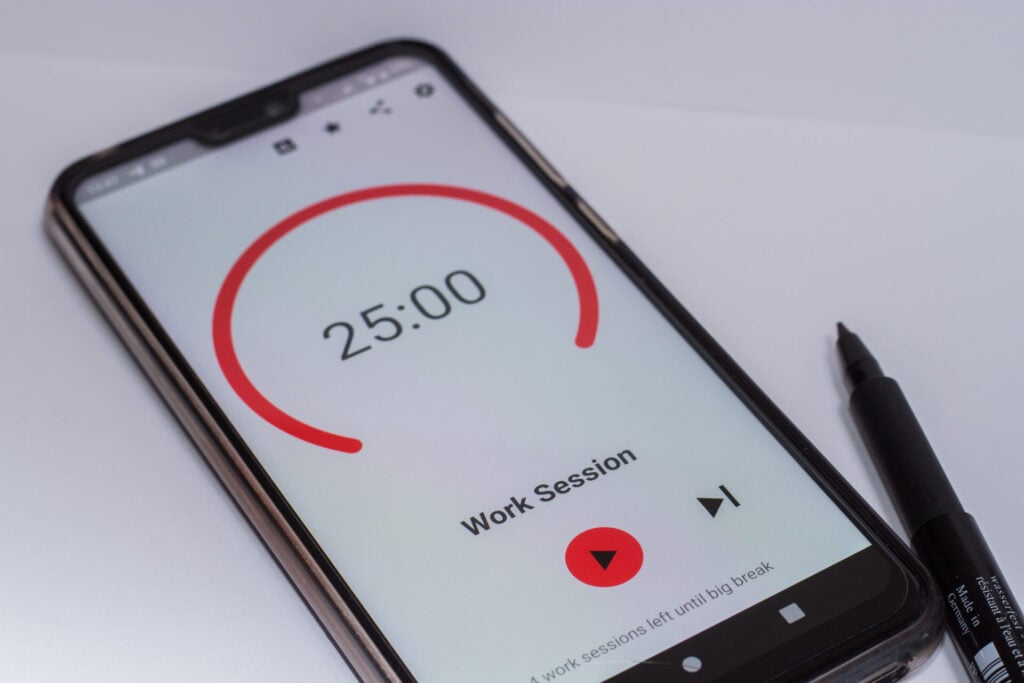Remember the last time you sat down to get something done, a report, an email, a project, and within minutes you were checking your phone, peeking at the news, or suddenly convinced the dishwasher needed unloading right now? Concentration, it seems, slips away faster than sand through our fingers.
But what if the secret to reclaiming your focus, feeling calmer, and even getting more done lay in… a pomodoro (Italian for tomato)?
It sounds ridiculous, yet that’s exactly what Francesco Cirillo discovered in the late 1980s. Then a stressed-out university student in Rome, Cirillo was floundering under piles of work. In desperation, he grabbed a kitchen timer shaped like a fat red tomato, wound it up to 25 minutes, and told himself he would work without pause until it rang. Then he gave himself a break. That pomodoro turned out to be revolutionary.

From a student flat in Rome, the Pomodoro Technique was born, and with it, what psychologists now call the Pomodoro Effect: the way short bursts of concentrated effort, punctuated by breaks, can transform the way we work and think.
Timing Is Everything
So why does a tomato-shaped timer still captivate productivity experts 35 years later?
‘If I feel myself tiring I will use the Pomodoro Technique,’ explains Dr. Barbara Oakley, professor of engineering at Oakland University and co-creator of the global online course Learning How to Learn. ‘Because I can always tell myself, “All I have to do is these 25 minutes and then I can stop.” And often that’s enough to get me into the flow and get me going.’
The classic formula is 25 minutes of pure concentration, then a five-minute breather. Four cycles in, you earn yourself a longer pause. It’s simple, but effective.
The ticking timer creates a sense of urgency. You’re no longer working for an endless, undefined block of time. You’re simply working until the bell. That changes everything
A study published in Frontiers in Psychology in 2023 (Biwer et al.) found that students using Pomodoro-style intervals actually studied less overall but felt less drained, took shorter breaks, and maintained more consistent energy than peers who self-regulated their study sessions.
Chris Bailey, author of The Productivity Project, argues that tools like timers create a healthy sense of urgency. Instead of facing an endless block of work, you’re simply committing until the bell rings, a small shift that makes tasks feel far less intimidating. ‘By controlling how much time you spend on a task,’ he argues, ‘you control how much energy and attention you spend on it.’

If it feels almost too good to be true, the science backs it up. Neuroscientists suggest that our brains can only maintain deep concentration for 20 to 45 minutes before attention wanes. The Pomodoro slots neatly into that natural rhythm.
When you laugh, your body produces endorphins. When you carry out the Pomodoro technique, you produce momentum. It’s the same principle: you’re tapping into your biology rather than fighting against it.
Those mini breaks also do more than rest your eyes. Downtime, even just a few minutes, allows the brain’s ‘default mode network’ to kick in, the system that processes memories, connects ideas, and sparks creativity. It’s why the lightbulb moment often arrives when you’re making tea, not staring at the screen.
Downtime, even just a few minutes, allows the brain’s ‘default mode network’ to kick in, the system that processes memories, connects ideas, and sparks creativity. It’s why the lightbulb moment often arrives when you’re making tea, not staring at the screen.
And then there’s the emotional side. ‘Work feels overwhelming when it’s shapeless,’ adds Oakley. ‘Breaking it into 25-minute slices makes it feel manageable. You’re no longer battling the whole mountain, just the next step.
‘Use the Pomodoro Technique to build your ability to focus and relax. Turn off distractions, set the timer to 25 minutes, focus, and then reward yourself.’
While devotees swear by the output, psychologists suggest the Pomodoro Effect also soothes our stressed, over-stimulated minds and can reduce anxiety. When you know you only have to focus for a set amount of time, it takes away the dread. That can lower stress and increase motivation.
‘Breaks can improve our moods, overall well-being and performance capacity,’ says Charlotte Fritz, PhD, associate professor in industrial/organisational psychology.

It can even shift the way we relate to our work. Instead of endless drudgery, the day becomes a series of sprints and rests, a rhythm closer to play than punishment. Some experts even suggest it helps restore balance in an always-on culture.
‘We’re taught to measure productivity in hours,’ says Bailey. ‘But it’s not hours that matter, it’s attention. The Pomodoro reframes that, and in doing so, it makes space for the rest of life too.’
No Pomodoro? No Problem
Of course, you don’t need a retro timer to join the revolution. Today, there are apps galore: Forest, which plants a virtual tree as you work; Focus Booster, which logs your sessions; or the classic timer on your phone. Some people tweak the intervals to 50 minutes on, 10 off, for deeper projects. Others use 15-minute micro-bursts to tackle dreaded admin.
The core remains the same: set a boundary, honour it, and respect the break
The Pomodoro Effect isn’t only for coders or students. Writers draft novels tomato by tomato. Teachers use it to structure revision. Office workers rely on it to clear inboxes before lunch. Even parents tackling laundry piles and bills have embraced the timer.
‘True productivity in a world where the work never ends is not about working harder, faster or longer. It’s about working smarter, doing your best work and coming home knowing you delivered,’ says productivity strategist Grace Marshall, author of How to Be Really Productive.
In a distracted, always-connected world, the humble tomato may be our best ally. A simple timer, a promise to yourself, and suddenly the impossible feels doable. You don’t have to conquer the whole to-do list. You just have to make it to the next bell.
So tomorrow morning, when you sit down and the pull of distraction appears, try the tomato trick. Set the timer, dive in, and give yourself the gift of focus.









